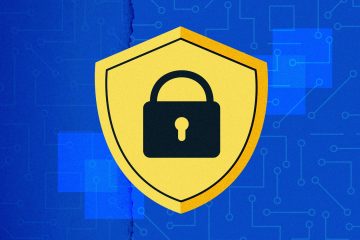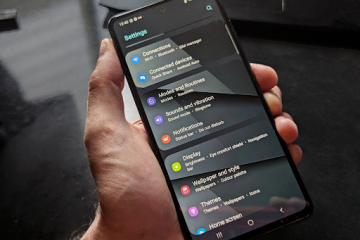Introduction
Digital burnout has become an increasingly prevalent issue in today’s always-connected world. With the constant bombardment of emails and notifications and the pressure to be available 24/7, it’s no wonder many people feel overwhelmed and exhausted by technology. Digital burnout is a state of mental, emotional, and physical exhaustion caused by chronic and sustained use of digital devices and platforms. Addressing digital burnout is essential since it can significantly impact our mental health and well-being
What is Digital Burnout?
Digital burnout is a specific type resulting from overusing technology and digital devices. It differs from regular burnout because it directly relates to using digital tools and platforms like smartphones, computers, social media, and email. Some common symptoms of digital burnout include:
Emotional exhaustion: Feeling drained, depleted, and lacking the energy to engage with digital tasks. Cynicism and detachment: Developing a hostile or apathetic attitude towards technology and digital interactions. Reduced sense of personal accomplishment: Feeling ineffective or unproductive despite spending significant time on digital activities. Physical symptoms: Encountering headaches, eye strain, neck pain, or other physical discomforts associated with extended device usage.
Signs You May Be Experiencing Digital Burnout
It’s essential to recognize the signs of digital burnout so that you can take steps to address it before it becomes a more severe problem. Some common signs include:
I was feeling overwhelmed by the constant influx of digital communication and information. Delaying or neglecting digital responsibilities, like addressing emails or participating in social media interactions. I needed help concentrating on screen-based work or feeling easily distracted by digital notifications.
You are experiencing anxiety or stress when away from your devices or unable to access them. You neglect self-care activities and personal relationships in favour of spending too much time on digital platforms.
If you experience these signs, it may be time to reassess your digital habits and take steps to prevent or manage digital burnout.
Causes of Digital Burnout
Several factors can contribute to the development of digital burnout, including:
Constant connectivity and information overload: Disconnecting and finding time for rest can be challenging with the ability to access information and communicate with others 24/7.
Pressure to be available 24/7: Many people feel pressure to respond to emails and messages immediately, even outside of work hours, which can lead to a lack of boundaries between work and personal life.
Lack of work-life boundaries: With the increase of remote work and the ability to access work from anywhere, separating work and personal time can be problematic, leading to longer work hours and less time for self-care.
Excessive screen time and multitasking: Spending long hours staring at screens and constantly switching between tasks can lead to mental and physical fatigue.
Comparison and FOMO on social media: Social media can create pressure to continually present a perfect image and keep up with others’ activities, leading to feelings of inadequacy and anxiety. Inadequate digital literacy skills: Without the necessary skills to manage digital tools and information effectively, people may feel overwhelmed and stressed by technology.
Impact of Digital Burnout on Mental Health
Digital burnout can have significant impacts on mental health, including:
Increased stress and anxiety: The constant pressure to be available and responsive can lead to chronic stress and anxiety. Depression and feelings of isolation: Excessive time spent on digital platforms can lead to feelings of loneliness and disconnection from real-life relationships.
Sleep disturbances and fatigue: Exposure to the blue light emitted by digital screens may disturb sleep cycles, leading to insomnia and daytime fatigue. Decreased job satisfaction and performance: Digital burnout can reduce motivation, productivity, and overall job satisfaction.
Strained personal relationships: Neglecting face-to-face interactions in favour of digital communication can strain personal relationships and lead to feelings of isolation.
It’s essential to prioritize mental health and prevent and manage digital burnout to maintain overall well-being.
Strategies for Preventing and Managing Digital Burnout
Developing healthy habits and setting boundaries around technology use to prevent and manage digital burnout is essential. Some effective strategies include:
Set boundaries and unplug regularly: Establish designated tech-free zones and times, such as during meals or before bedtime. Take regular digital detoxes or sabbaticals, where you completely disconnect from digital devices for a set period.
Practice mindful technology use: Use your device intentionally and avoid mindless scrolling or browsing. Minimize multitasking and distractions by focusing on one task at a time and closing unnecessary tabs or apps. Prioritize self-care and offline activities: Engage in hobbies and physical exercises that don’t involve screens, such as reading, painting, or hiking.
Nurture in-person relationships by scheduling regular face-to-face interactions with friends and family. Improve digital literacy skills: Learn to manage notifications and information flow by turning off non-essential alerts and using filters or labels to organize emails.
Utilize productivity methods and tools such as the Pomodoro Technique or time-blocking to manage your time and minimize distractions. Seek support from others: Communicate with colleagues and managers about your workload and set realistic expectations for availability and response times. Join support groups or seek therapy to address the emotional and mental health impacts of digital burnout.
Workplace Strategies for Reducing Digital Burnout
Employers also have a role in avoiding digital burnout and promoting a healthy work-life balance. Some strategies that workplaces can implement include:
Promote a culture of digital well-being: Encourage employees to take regular breaks from screens and prioritize self-care activities. Model healthy digital habits and boundaries, such as not sending emails outside work hours.
Provide training on digital literacy and productivity: Offer workshops or resources on effective email management, time management, and digital communication skills.
Provide access to productivity tools and platforms to help employees manage their workload more efficiently.
Encourage work-life balance and unplugged time off: Respect employees’ time off and avoid contacting them outside of work hours unless necessary.
Encourage the use of vacation time and provide employees opportunities to disconnect from work altogether.
Reevaluate availability and response times: Set realistic expectations for email response times and avoid the pressure to be constantly available.
Establish clear communication protocols and guidelines for urgent or after-hours situations.
Offer mental health resources and support: Provide access to employee assistance programs (EAPs) or mental health benefits that can help employees manage stress and burnout. Foster a supportive and open workplace culture where employees feel comfortable discussing mental health concerns.
Conclusion
Digital burnout is a growing concern in our increasingly connected world, and taking proactive steps to address it is essential. By recognizing the signs and causes of digital burnout, individuals can develop healthy habits and boundaries around technology use to prevent and manage its impacts on mental health and well-being.
Employers are also responsible for promoting a culture of digital well-being and providing resources and support for employees to manage digital burnout at work. By prioritizing digital literacy, work-life balance, and mental health, we can create a more friendly and healthy relationship with technology in our personal and professional lives.
Remember, it’s okay to unplug and take breaks from digital devices. By being mindful of our technology use and prioritizing self-care and real-life connections, we can prevent digital burnout and maintain a healthy, balanced life in the digital age.




